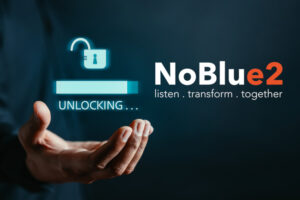The pandemic changed the event landscape. Overnight, events had to be held virtually, using digital methods.
Even now that in-person events and exhibitions are back on the agenda, their prevalence and success has meant that they are here to stay. Regardless of whether you are hosting your own events or attending those run by others, are in-person or virtual events best for you?
Here, we look at the benefits of each type of event and assess which formats suit which.
Benefits of In-Person Events
When you’re face-to-face with your prospect or a company salesperson, you can assess body language and get a good feel for them based on non-verbal gestures and tone of voice. This is harder over video call, especially if someone is presenting to you using a pre-prepared speech.
In-person events also make it easier to meet with people and get a feel for who they are. If you are prospecting, you can more easily gauge engagement at in-person events. You can judge people’s interest levels from how they respond to you. Salespeople have a knack of assessing potential from face-to-face meetings in this way. And if you’re attending an event as a potential buyer, meeting staff can give you a good idea of what it might be like to deal with that company.
It’s also hard to maintain people’s focus when you’re running virtual events. There is the possibility of numerous distractions, all of which can be acted on. The attendee might be tempted to answer a call, browse other websites, or speak to others. At an in-person event like a conference presentation, these distractions are largely not there, and anyway the behaviour expectations dictate that attendees do not want to appear rude by leaving the room or taking a call. So, you can maintain a greater level of concentration amongst delegates when you hold in-person events.
Real life events let you meet a wide range of people and promote networking and socialising. The same level and depth of contact is almost impossible to achieve in digital settings. In-person events give you the chance to make connections as well as meet up with old contacts. There are more opportunities to speak to industry peers, socialise with others and even to make business deals or pursue openings for a new job. Ultimately, we like the human interaction and connection that in-person meetings can bring.
Finally, it’s sometimes good to get away from the office. It can help you relax and re-energise. With fewer distractions, you can concentrate on what might be an important event. People even look forward to visiting other cities or countries – and there can be an air of excitement surrounding a major event that is only held every year or two.
Benefits of Virtual Events
Despite the obvious benefits of in-person events, there are some pros of virtual events to consider too.
Firstly, there are cost benefits of digitally produced events. They cost far less than in-person events. There is no travel, no hotel stays, no subsistence costs. The same goes for when you are holding your own events, where you don’t have venue or hospitality costs, no travel costs and no expenditure on shipping exhibition displays or your own products. Plus, there’s a cost benefit for your prospects or clients that you can use in your promotional marketing. You can promote the fact that it will cost them less than if they had to attend in-person.
Digital events may be more attractive to those that want to limit travel for other reasons. They are often more convenient, with less time away from work and no need for an overnight stay away from home. Those with family commitments or limits on their time will prefer virtual events.
Environmentally, there are benefits too. Digital events mean no travel, so international air travel and other transport journeys are eliminated. And venues don’t need to be powered or heated. So, there is less of an impact on carbon emissions.
Digital events can help attract audiences from around the world. Instead of having to make a lengthy journey, they can attend live – or watch replays – without worrying about time zones or if the schedule fits their own timetable.
From a sales and marketing point of view, remote events are great for measuring results. It’s simple to track attendance, viewing durations, and clicks. You can easily then follow-up with digital email and social campaigns, with the data already available to you in your marketing or CRM system.
Are Some Events More Suited to In-Person or Virtual?
Holding short seminar-type events as webinars is a good strategy. Hundreds of people can attend them, from anywhere in the world. And if potential delegates are elsewhere at the time, like being off on holiday, they can still attend a virtual event.
Many organisers are starting to run conferences in a hybrid fashion. They are still selling tickets for people to attend in-person, but are also offering virtual passes, so that people can view the presentations digitally. Where you have a big draw name, or a meet and greet opportunity with a celebrity or high-profile industry figure, then this will attract people to actually attend.
Guest panels though are probably managed best in-person. Video conference software doesn’t deal very well with people talking over each other and this can cause issues with what the audience missing what speakers have said or not being able to fully hear or follow a discussion.
Exhibitions and trade fairs are always best when done in-person. An exhibition is all about seeing, feeling and experiencing products. Without going in person, you simply cannot achieve this. If you sell products that are visual, edible or which need close inspection, then these are only appreciated in person. You cannot launch a new line of food without your prospective customers being able to taste it. Nor can you show clothing without buyers feeling the quality of the cloth or assessing the tailoring skills.
Networking can be done both ways. It is usually better in-person, though, as you can better judge relationships through body language and other non-verbal clues. However, some events can still be run digitally. The ‘meet the buyer’ type of events where you meet a succession of people in 5- or 10-minute blocks can work very well via video conference platforms.
With user events, it is best to hold these in person. Meeting your users – and allowing them to meet each other – can be advantageous for providing useful feedback and allowing delegates to talk in depth about the product or service.
For demonstrations, again, these are best held in person as this gives those attending the opportunity for a hands-on approach. Some products do lend themselves to online demonstration, though. It is easy, for example, to demonstrate software online.
With workshops and training, these can be held either way. In-person is great for training on anything practical. This might be the case where the teacher needs to inspect the learner’s work. Training is easy to deliver online though for other, more academic learning, like business training, or learning about more abstract concepts.
Digital or In-Person – Which is Best?
The ultimate choice of type of event is down to you.
If you are attending an event, then you will automatically choose what is best for you at that time. It may be that you attend some events virtually, leaving you time for a longer visit to an important conference or exhibition.
And if you are hosting an event, you need to consider your product or service and your audience. Find out what they like best – or consider a hybrid approach that will appeal to all types.










